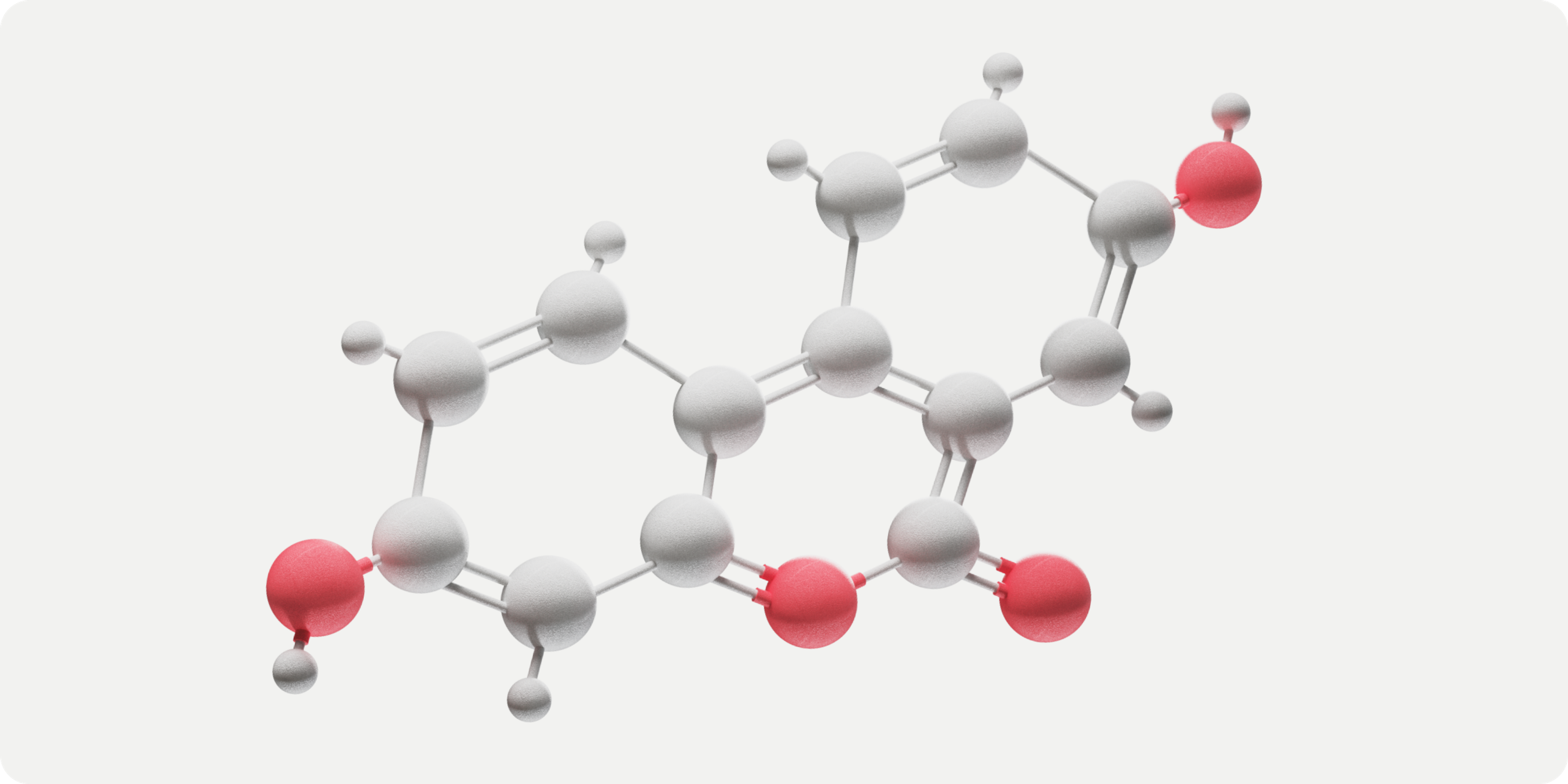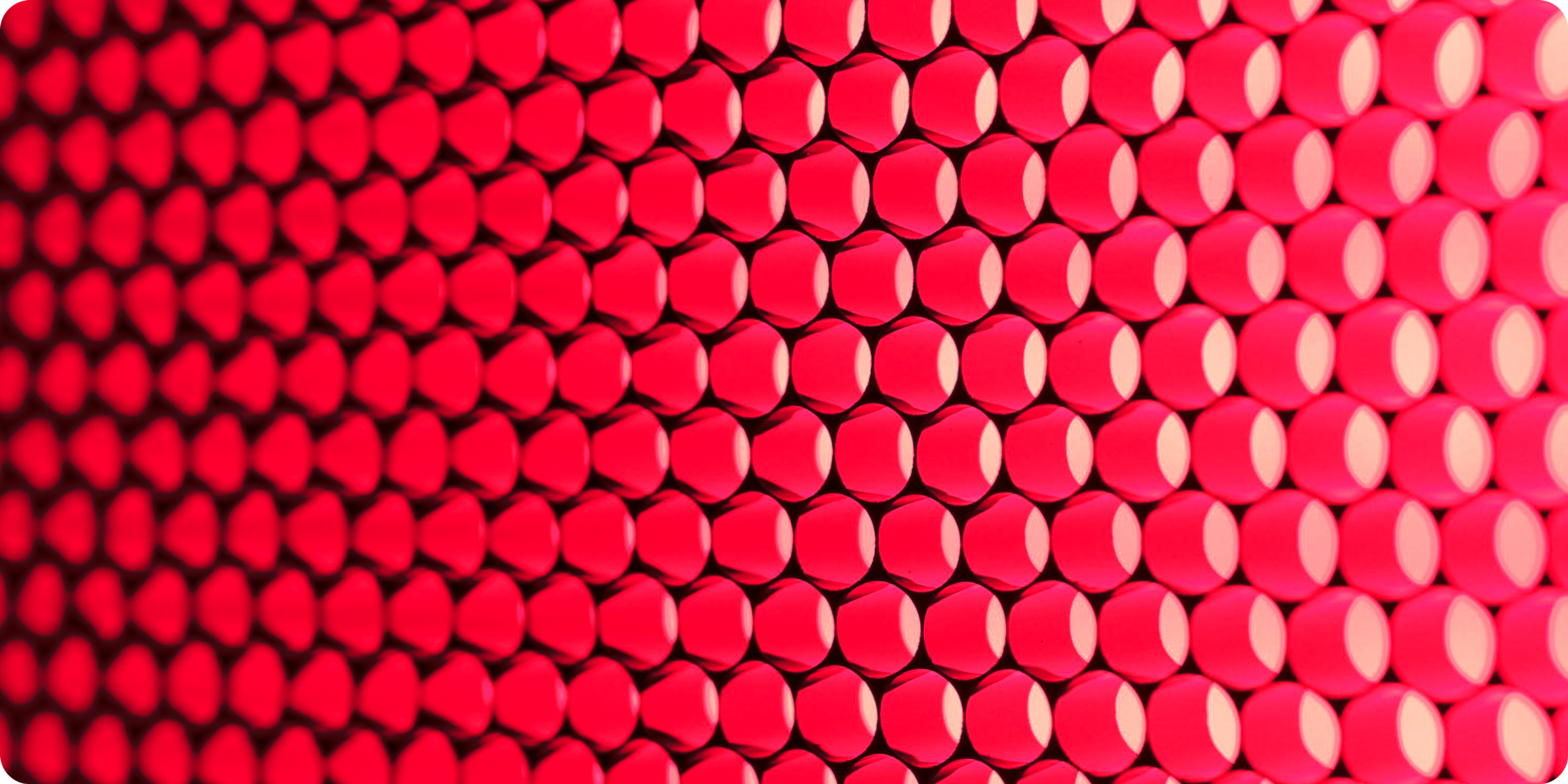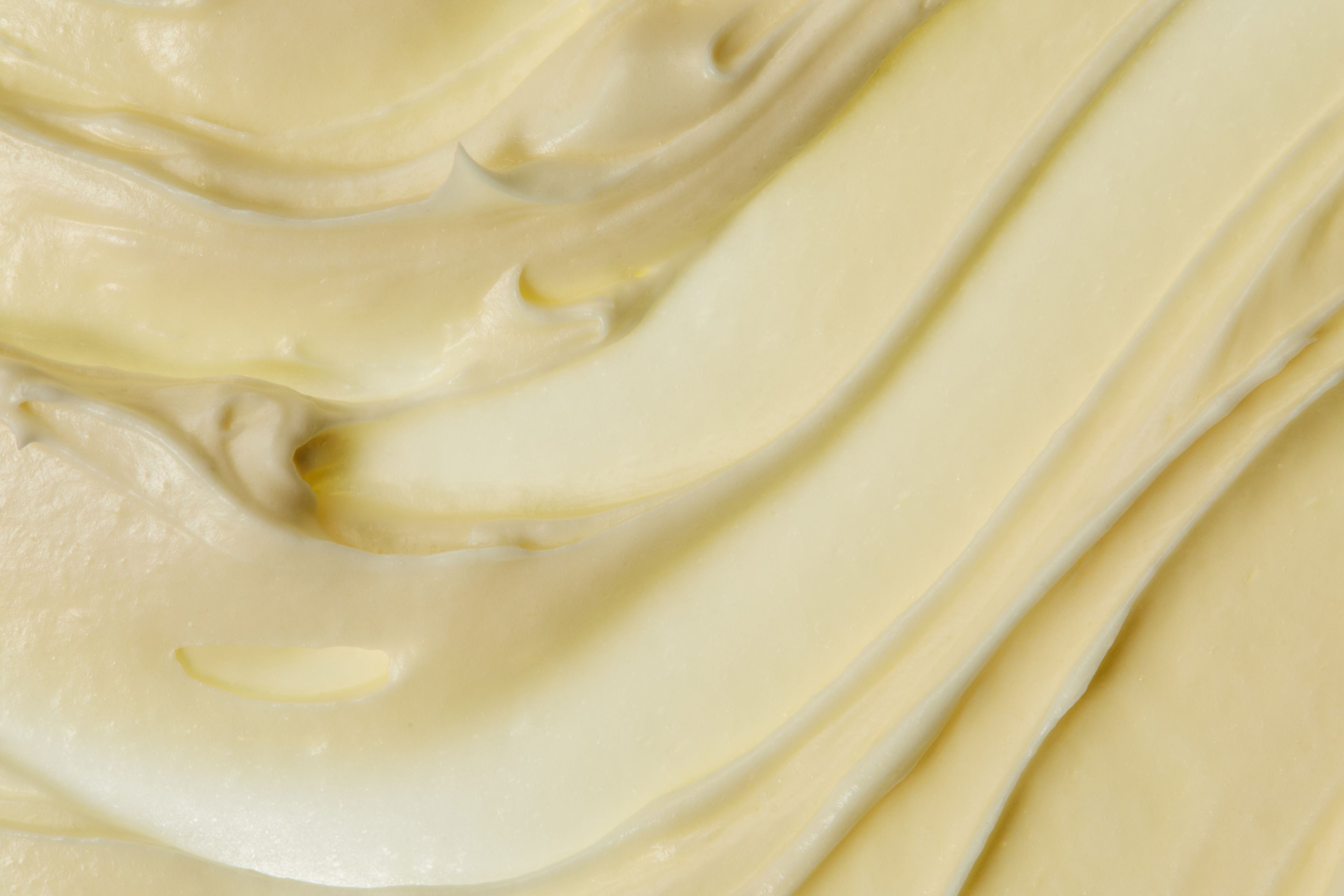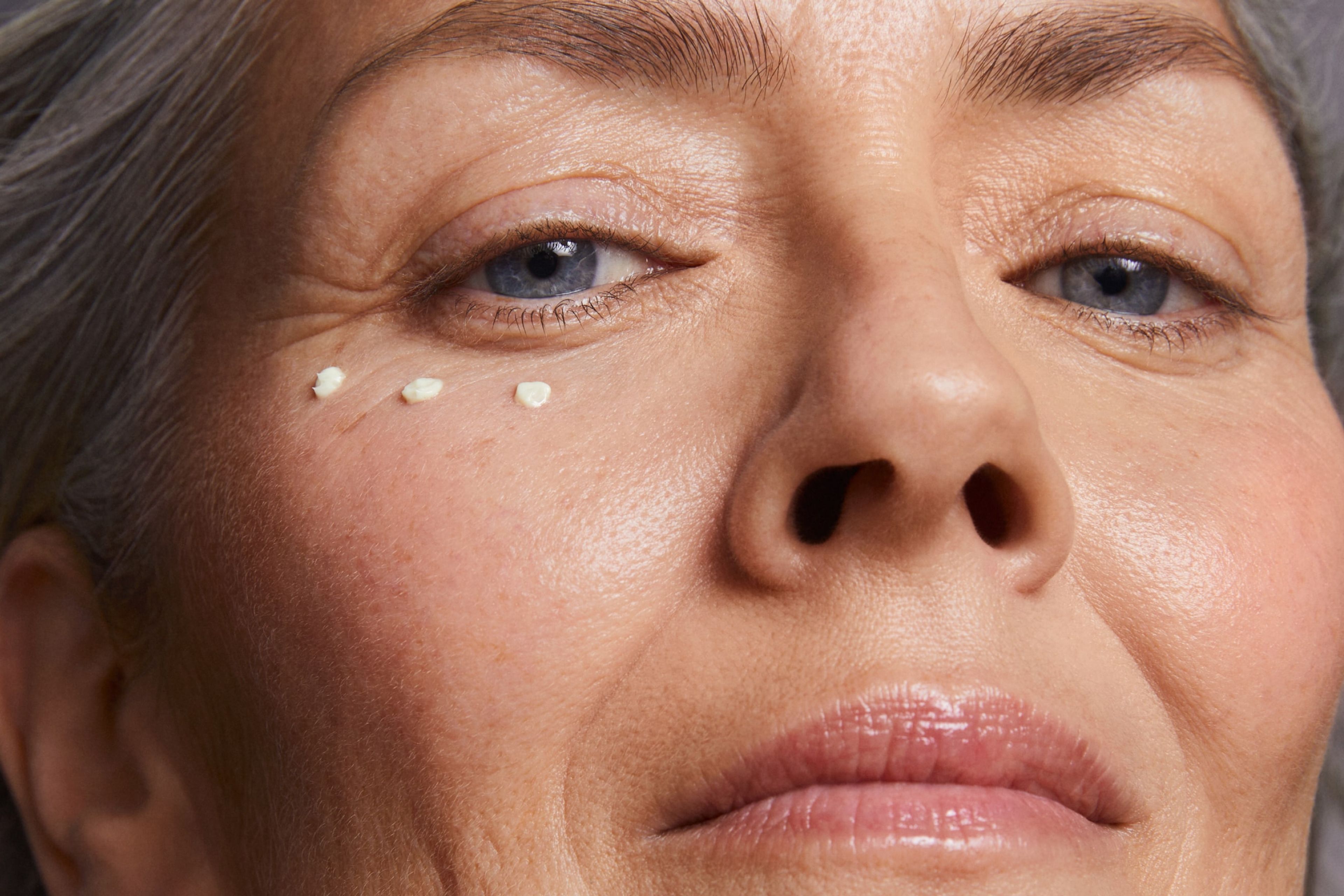Shedding light on skin care: red light vs. Mitopure®
Learn how red light therapy boosts cellular energy and reduces signs of aging skin. Explore effective alternatives like Mitopure® for skin health.

What to know
Both red light therapy and Mitopure® are emerging as two novel treatments for aging skin
Both work by improving mitochondrial function and increasing cellular energy
Scientific studies have shown benefits in skin health, improvements in collagen production
Red light is that it can take several weeks to see improvements, and it requires consistent use at at least 15-minute intervals.
Mitopure has been clinically proven to visibly improve signs of aging in as little as two weeks' time.
Let's shine a light on our skin cells, literally.
Skin appearance is indicative of cellular health and, more specifically, cellular energy. Certain lifestyle techniques can help us support our mitochondria, boosting cellular energy. Red light therapy, also known as photobiomodulation, has recently gained attention for its potential to increase cellular energy and rejuvenate the skin.
However, as we delve deeper into the realm of cellular health and energy, another contender, Mitopure® (Urolithin A), presents a compelling case with its robust scientific backing and proven clinical results. With over 15 years of research backing its efficacy, Mitopure is clinically proven to enhance mitochondrial function, directly impacting skin health and appearance.
Let's investigate how these two approaches to skin care compare and why Mitopure might just be the superior choice for those serious about their skin health.

What is Mitopure?
Mitopure is a highly pure form of Urolithin A, a compound that supports mitochondrial health. By targeting our cells' energy producers, it has a direct effect on skin appearance and resilience.
This unique mechanism targets both the biological reasons why skin ages and external factors such as sun damage. It works quickly and powerfully— in as little as two weeks, you can see visible improvements in wrinkle depth and volume.

The Serum
Bestseller4.6 · 128 reviews
Lifts the skin. Powered by Mitopure®
Mitopure is clinically proven to:[1]
- Repair and regenerate at the cellular level
- Increase skin firmness and elasticity
- Reduce the appearance of fine lines & wrinkles
- Increase the skin's radiance for a healthy glow

What is red light therapy?
With red light therapy, you expose your skin to a lamp, device, or laser with red light. The specific light wavelengths penetrate deep into your skin, stimulating various cellular processes. This promotes a range of red light therapy benefits, including combating skin aging.[2]
The science behind red light therapy
Once red light penetrates our skin, it’s absorbed by the mitochondria. This enhances mitochondrial production of adenosine triphosphate (ATP), the cell's primary energy currency. [3]This surge in cell energy enhances cellular function, leading to a cascade of positive effects on the skin and overall health.
The benefits of red light therapy
Some of the known red light therapy benefits include reducing inflammation in the body, improving circulation, and accelerating wound healing.[4] Studies also suggest that red light therapy may be effective for improving muscle soreness after a workout.[5]
How does red light therapy compare to Mitopure?
Both Mitopure and red light enhance mitochondrial function and can be considered a way to biohack your skin.
Let's explore how these two innovative treatments stack up against each other for enhancing skin vitality and combating the signs of aging.
Here are some science-backed benefits of red light therapy for your skin and how they compare to the clinically proven results of Mitopure.
- Collagen stimulation: You may have heard about the use of red light therapy for skin tightening and red light therapy for loose skin. Mitochondrial function is critical for collagen synthesis, a crucial structural protein that elevates skin firmness and elasticity. This can reduce the appearance of fine lines, wrinkles, and pores and improve overall skin texture.[6]
While red light may be beneficial for improving collagen production - results will likely take a long time. For example, one study showed that it took 15 weeks of 30-minute sessions to start seeing positive changes.[8]
On the other hand, studies using topical application of Mitopure (UA) show that after 8 weeks, the genes that turn on collagen production were significantly upregulated.[7] - Improved skin tone and texture: Increased cellular activity and improved circulation can lead to a more even, radiant skin tone and a smoother, more refined texture. A study looking at red light therapy showed that it can help diminish the appearance of age spots, discoloration, and other skin imperfections, however, these skin tone benefits were not observed till two months of consistent use of treatment. [9]
Studies using Timeline's Skincare products with Mitopure also show improvements in skin tone and texture. Users agree that dark spots, age spots, and imperfections are visibly diminished and that skin tone and texture are improved after three weeks of use. - Reduced inflammation and redness: Lowering oxidative stress can calm and soothe the skin. This can be especially helpful for individuals with conditions like acne, eczema, or rosacea.[10]
Mitopure can also help resolve redness and inflammation, especially that associated with inflammation associated with UV light exposure.[11] - Combats photodamage: 80 percent of skin aging is caused by the damaging effects of the sun.[13] While there is some evidence that suggests red light therapy can help with photodamage, again, it takes regular use over a long period of time to see results. Studies suggests that you would need to use a red light device twice a week for 15 weeks (30 sessions total).[14]
Alternatively, Mitopure is a strong ally in the fight against sun damage. A clinical trial where Mitopure was applied to the skin directly after exposure to UVB light demonstrated its ability to lessen inflammation and protect against photodamage. [12]
Potential risks
While red light therapy is generally considered safe and well-tolerated, it's important to be aware of potential risks and follow best practices to ensure optimal results. There have been reports of burns, lesions, and blistering from red light therapy after using the device for 30 minutes. There is also a potential risk of eye damage, so make sure you wear proper eye protection.
Mitopure offers a safer alternative. It is extremely gentle, safe, and well-tolerated for all skin types and colors. Study participants who used Mitopure continuously for six weeks reported no skin irritation or sensitization.[15]
Best red light practices
Consult with a dermatologist to determine the appropriate wavelength, intensity, and duration of your treatment. Here are some general rules of thumb:
- Take it slow: start with shorter exposure times and gradually increase as tolerated.
- Shield your eyes: protect the eyes by wearing protective eyewear during treatment.
- All in moderation: avoid excessive exposure or overuse. This can potentially lead to adverse effects.
There are a variety of devices available on the market. Some of the most popular and effective options include:
- LED light therapy devices and masks: These handheld devices emit targeted red and near-infrared light, allowing for easy, at-home use. Make sure you consult your dermatologist before using these devices.
- Red light therapy panels: These devices are typically used in spas or clinics. These panels can provide full-body or targeted treatment.
- Red light therapy lamps: These lamps emit red and near-infrared light and can be used for targeted or full-body treatments.
Red light therapy alternatives
While red light therapy offers an effective approach to skin health, it comes with a set of drawbacks. Notably, the need for multiple sessions and the accompanying time commitment can make it less accessible for many individuals. Several treatments are needed before you can see the red light therapy benefits. Additionally, the potential risks, such as burns and the need for protective eyewear, can be deterrents for consistent use.

Mitopure as a red light alternative
If you are looking for a way to quickly and powerfully amp up cellular energy in your skin, Mitopure is a great alternative to red light therapy, and it presents a more user-friendly approach. Backed by 15+ years of research, Mitopure (Urolithin A) is not only clinically proven to repair and regenerate skin at the cellular level, but it also supports collagen production and helps to protect the skin from the damaging effects of the sun.[16]
Moreover, the ease of incorporating Mitopure into your daily routine without the need for special equipment or extra time out of your day makes it a practical choice for continuous skin care. This accessibility, combined with its proven safety for sensitive skin, makes it a clear winner in the quest for healthier, younger-looking skin.
All of the Timeline Skincare products contain Mitopure®. Along with the proven benefits, Mitopure® is also exceptionally safe for sensitive skin. This makes it a suitable and highly effective red light alternative for your skin!

The Day Cream
4.6 · 90 reviews
Redensifies the skin's appearance. Powered by Mitopure®
Authors

Freelance writer

Reviewed by
Lead Regulatory Affairs & Scientific Manager Alliances at Timeline
References
- ↑
Topical application of Urolithin A slows intrinsic skin aging and protects from UVB-mediated photodamage: Findings from Randomized Clinical Trials D D’Amico, AM Fouassier, J Faitg, N Hennighausen, M Brandt, D Konstantopoulos, C Rinsch, A Singh medRxiv 2023.06.16.23291378; doi: https://doi.org/10.1101/2023.06.16.23291378
- ↑
Couturaud V, Le Fur M, Pelletier M, Granotier F. Reverse skin aging signs by red light photobiomodulation. Skin Res Technol. 2023 Jul;29(7):e13391. doi: 10.1111/srt.13391. PMID: 37522497; PMCID: PMC10311288.
- ↑
Powner MB, Jeffery G. Light stimulation of mitochondria reduces blood glucose levels. J Biophotonics. 2024 May;17(5):e202300521. doi: 10.1002/jbio.202300521. Epub 2024 Feb 20. PMID: 38378043.
- ↑
Hamblin MR. Mechanisms and applications of the anti-inflammatory effects of photobiomodulation. AIMS Biophys. 2017;4(3):337-361. doi: 10.3934/biophy.2017.3.337. Epub 2017 May 19. PMID: 28748217; PMCID: PMC5523874.
- ↑
Chang, W., Lin, H., Chang, N., & Wu, J. (2021). Effects of 830 nm Light-Emitting Diode Therapy on Delayed-Onset Muscle Soreness. Evidence-based Complementary and Alternative Medicine, 2021, 1-7. https://doi.org/10.1155/2021/6690572.
- ↑
Prabhu V, Rao BSS, Rao ACK, Prasad K, Mahato KK. Photobiomodulation invigorating collagen deposition, proliferating cell nuclear antigen and Ki67 expression during dermal wound repair in mice. Lasers Med Sci. 2022 Feb;37(1):171-180. doi: 10.1007/s10103-020-03202-z. Epub 2020 Nov 27. PMID: 33247410; PMCID: PMC8803692.
- ↑
Topical application of Urolithin A slows intrinsic skin aging and protects from UVB-mediated photodamage: Findings from Randomized Clinical Trials D D’Amico, AM Fouassier, J Faitg, N Hennighausen, M Brandt, D Konstantopoulos, C Rinsch, A Singh medRxiv 2023.06.16.23291378; doi: https://doi.org/10.1101/2023.06.16.23291378
- ↑
Wunsch, A., & Matuschka, K. (2014). A controlled trial to determine the efficacy of red and near-infrared light treatment in patient satisfaction, reduction of fine lines, wrinkles, skin roughness, and intradermal collagen density increase.. Photomedicine and laser surgery, 32 2, 93-100 . https://doi.org/10.1089/pho.2013.3616.
- ↑
Couturaud V, Le Fur M, Pelletier M, Granotier F. Reverse skin aging signs by red light photobiomodulation. Skin Res Technol. 2023 Jul;29(7):e13391. doi: 10.1111/srt.13391. PMID: 37522497; PMCID: PMC10311288.
- ↑
Hamblin MR. Mechanisms and applications of the anti-inflammatory effects of photobiomodulation. AIMS Biophys. 2017;4(3):337-361. doi: 10.3934/biophy.2017.3.337. Epub 2017 May 19. PMID: 28748217; PMCID: PMC5523874.
- ↑
Topical application of Urolithin A slows intrinsic skin aging and protects from UVB-mediated photodamage: Findings from Randomized Clinical Trials D D’Amico, AM Fouassier, J Faitg, N Hennighausen, M Brandt, D Konstantopoulos, C Rinsch, A Singh medRxiv 2023.06.16.23291378; doi: https://doi.org/10.1101/2023.06.16.23291378
- ↑
Topical application of Urolithin A slows intrinsic skin aging and protects from UVB-mediated photodamage: Findings from Randomized Clinical Trials D D’Amico, AM Fouassier, J Faitg, N Hennighausen, M Brandt, D Konstantopoulos, C Rinsch, A Singh medRxiv 2023.06.16.23291378; doi: https://doi.org/10.1101/2023.06.16.23291378
- ↑
Flament, Frederic et al. “Effect of the sun on visible clinical signs of aging in Caucasian skin.” Clinical, cosmetic and investigational dermatology vol. 6 221-32. 27 Sep. 2013, doi:10.2147/CCID.S44686 - ↑
Wunsch, Alexander, and Karsten Matuschka. “A controlled trial to determine the efficacy of red and near-infrared light treatment in patient satisfaction, reduction of fine lines, wrinkles, skin roughness, and intradermal collagen density increase.” Photomedicine and laser surgery vol. 32,2 (2014): 93-100. doi:10.1089/pho.2013.3616
- ↑
Topical application of Urolithin A slows intrinsic skin aging and protects from UVB-mediated photodamage: Findings from Randomized Clinical Trials D D’Amico, AM Fouassier, J Faitg, N Hennighausen, M Brandt, D Konstantopoulos, C Rinsch, A Singh medRxiv 2023.06.16.23291378; doi: https://doi.org/10.1101/2023.06.16.23291378
- ↑
Topical application of Urolithin A slows intrinsic skin aging and protects from UVB-mediated photodamage: Findings from Randomized Clinical Trials D D’Amico, AM Fouassier, J Faitg, N Hennighausen, M Brandt, D Konstantopoulos, C Rinsch, A Singh medRxiv 2023.06.16.23291378; doi: https://doi.org/10.1101/2023.06.16.23291378

•
Skincare•
Inside Timeline’s Lab: Meet Mitochondria Expert Julie Faitg

•






